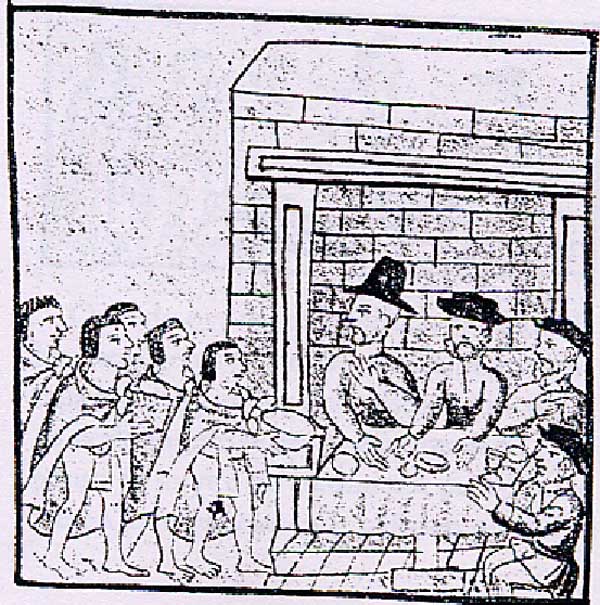The Sacrament
"And it came to pass that Jesus commanded his disciples that they should bring forth some bread and wine unto him." "And this shall ye always observe to do…" "And he said unto them: He that eateth this bread eateth of my body… and he that drinketh of this wine drinketh of my blood…" (3 Nephi 18:1-7, & 3 Nephi 20:8) 34 AD Western Hemisphere
----------------------
As recorded in the Book of Mormon, after Jesus Christ's Resurrection, he came to the Western Hemisphere in 34 AD and instituted and explained the meaning of the Sacrament to the Nephites. The resurrected Saviors teachings about the Sacrament were so important to these ancient people that even after 1400 years had passed, a falling away remnant of the Saviors teachings on the Sacrament still remained amongst the Aztec and Maya People.
----------------------
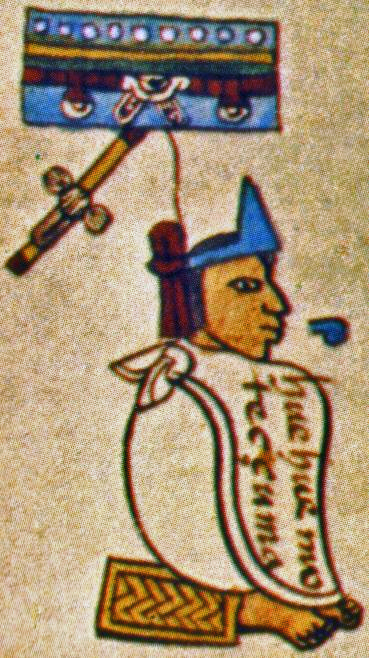 A drawing of the Aztec ruler [Montezuma] or Moctezuma 1, sitting on his throne.
A drawing of the Aztec ruler [Montezuma] or Moctezuma 1, sitting on his throne.
The sideways upside-down question mark in front of his mouth means that he is talking.
The line extending above his head is attached to a name-glyph or a drawing representing his name.
<< Hernando Cortes and his men being offered bread and blood. Picture from; (Nahuatl, [Aztec], accounts of the Conquest of Mexico p. 8)
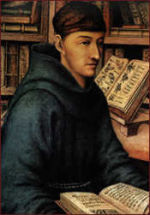 << Friar Bernardino de Sahagun
<< Friar Bernardino de Sahagun
1519 A.D. Montezuma's emissaries as they greet Hernando Cortes. They were commanded by Moctezuma to give Cortes flower mixed with blood. Friar Bernardino de Sahagún and a group of native Aztec Nahuatl Indian scholars, recorded some of the details about this event as follows.
"Those envoys went and reached the place where the Spaniards were. They offered them tortillas sprinkled with human blood; when the Spaniards saw that food, it made them very nauseous. They began to spit and detest it, because the bread reeked of blood. This was done by order of Moteuccoma, [Montezuma]…" they all ate the white bread, without blood..." (Bernardino de Sahagun, born 1500 died 1590 compiled the Florentine Codex, Nahuatl, [Aztec], accounts of the Conquest of Mexico info. p. 8)
---------------------
"The Aztec priests were seen to prepare a cake of flour mixed with blood which they consecrated and gave to the people 'declaring it was the flesh of Deity'." (Conquest of Mexico Vol. 2 appendix part 1 p. 389, by Prescott)
----------------------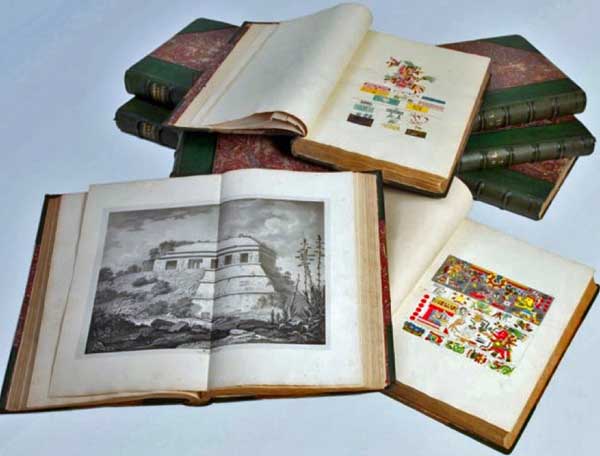 << Antiquities of Mexico, by Lord Edward Kingsborough
<< Antiquities of Mexico, by Lord Edward Kingsborough
"…amongst the Mexicans, [Aztecs], the rite of Teoqualo, or eating God… practiced by the Mexicans previously to their receiving the body of Vitzilopuchtli, appears to have been in commemoration of the crucifixion of Quecalcoatle. That the Mexican ceremony of Teoqualo was of two kinds, and was solemnized by drinking the blood, as well as by eating the flesh of Quecalcoatle…" (Antiquities of Mexico by Lord Edward Kingsborough Vol. 8 p. 47)
"Even in the...1840's...Kingsborough's works had not reach America."
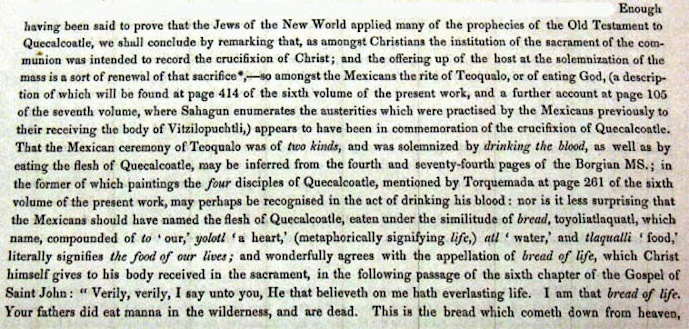 << A page on the Sacrament, from Antiquities of Mexico
<< A page on the Sacrament, from Antiquities of Mexico
------------------
As the Spanish conquistadors, led by Hernando Cortes, landed and begun settling in on the shores in the area of Vera Cruz Mexico. The natives along the shore saw their arrival and sent Aztec runners with the news of Cortes arrival to the richest and most powerful ruler in all of the Americas, Montezuma.
Montezuma and the entire Aztec nation were waiting for the prophecies to be fulfilled. Various prophecies were handed down to them by tradition and also recorded in their books of the return of the God that they then called Quetzalcoatl.
Montezuma with all due respect to Quetzalcoatl or his representative begin to welcome him with a welcome that should be given to the God who would come to rule and reign.
Not only did Montezuma sent his highest-ranking delegates to give Quetzalcoatl a royal welcome. Montezuma also sent 100 servants bearing great treasures including gold and silver, the very best of what they had.
With great importance and great respect Montezuma commanded his “emissaries” to offer “tortillas”, [a tortilla is what the Aztecs used for bread], and “blood” to Cortes and his men. This was in fact a falling away remnant of the Saviors teachings of the Sacrament, which had been taught to the Nephites over 1400 years earlier by the Savior Himself. (3 Nephi 20:8) 34 AD
---------------------
The Incas practiced a sacrament reminiscent of the sacrament instituted by Christ to symbolize his atoning sacrifice to his followers. Acosta states that the Virgins of the Sun prepared many balls with blood in them from white yearling llamas that had been sacrificed. They gave these many balls to the congregation." (Acosta, Historia, pg. 411)
---------------------
The following information is from The Catholic Online Encyclopedia, 2015;
“The Mayas... [in 1519 AD performed], an imitation of communion was practiced, the bread which was called Toyolliaitlacual, i.e., food of our souls" (The Catholic Online Encyclopedia, Volume X, Copyright © 1911 by Robert Appleton Company, Online Edition Copyright © 1999 by Kevin Knight, Nihil Obstat, October 1, 1911. Remy Lafort, S.T.D., Censor, Imprimatur. +John Cardinal Farley, Archbishop of New York)
[The dictionary definition of the word "communion" means; the service of Christian worship at which bread and wine are consecrated and shared.]
